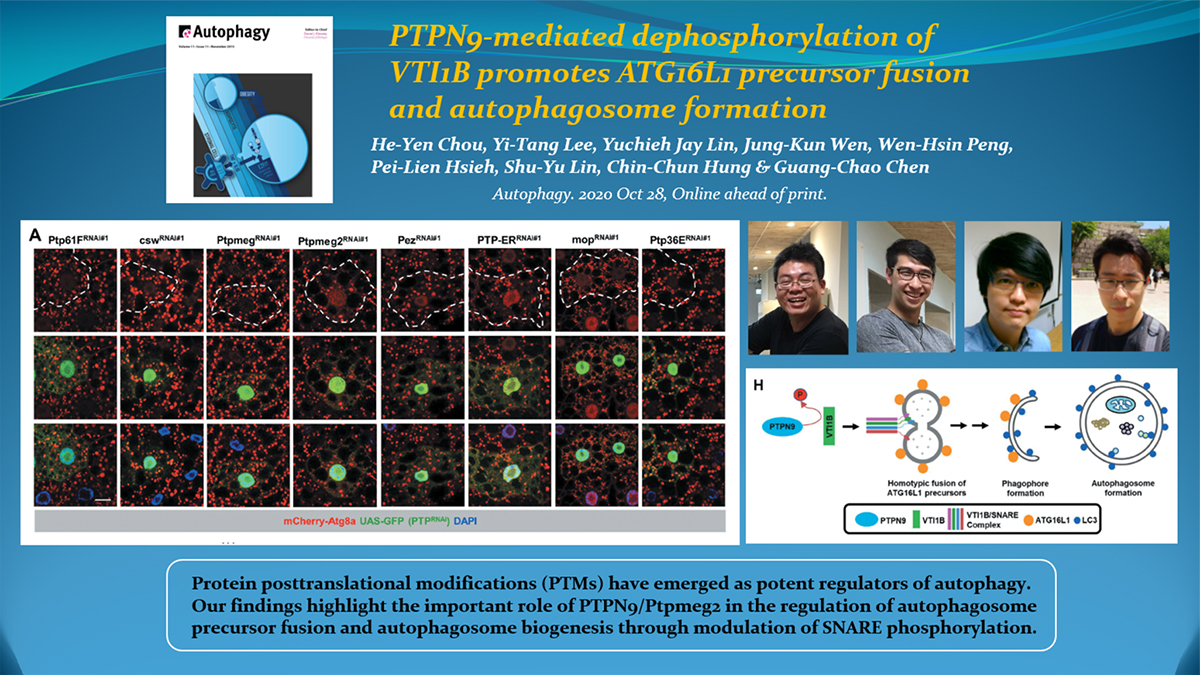
 中央研究院 生物化學研究所
中央研究院 生物化學研究所
Macroautophagy/autophagy is an evolutionarily conserved intracellular pathway for the degradation of cytoplasmic materials. Under stress conditions, autophagy is upregulated and double-membrane autophagosomes are formed by the expansion of phagophores. The ATG16L1 precursor fusion contributes to development of phagophore structures and is critical for the biogenesis of autophagosomes. Here, we discovered a novel role of the protein tyrosine phosphatase PTPN9 in the regulation of homotypic ATG16L1 vesicle fusion and early autophagosome formation. Depletion of PTPN9 and its Drosophila homolog Ptpmeg2 impaired autophagosome formation and autophagic flux. PTPN9 colocalized with ATG16L1 and was essential for homotypic fusion of ATG16L1+ vesicles during starvation-induced autophagy. We further identified the Q-SNARE VTI1B as a substrate target of PTPN9 phosphatase. Like PTPN9, the VTI1B nonphosphorylatable mutant but not the phosphomimetic mutant enhanced SNARE complex assembly and autophagic flux. Our findings highlight the important role of PTPN9 in the regulation of ATG16L1+ autophagosome precursor fusion and autophagosome biogenesis through modulation of VTI1B phosphorylation status. Abbreviations: csw: corkscrew; EBSS: Earle's balanced salt solution; ERGIC: ER-Golgi intermediate compartment; ESCRT: endosomal sorting complexes required for transport; mop: myopic; NSF: N-ethylmaleimide-sensitive factor; PAS: phagophore assembly site; PolyQ: polyglutamine; PtdIns3P: phosphatidylinositol-3-phosphate; PTK: protein tyrosine kinase; PTM: posttranslational modification; PTP: protein tyrosine phosphatase; PTPN23/HD-PTP: protein tyrosine phosphatase non-receptor type 23; SNARE: soluble N-ethylmaleimide sensitive factor attachment protein receptor; STX7: syntaxin 7; STX8: syntaxin 8; STX17: syntaxin 17; VAMP3: vesicle associated membrane protein 3; VAMP7: vesicle associated membrane protein 7; VTI1B: vesicle transport through interaction with t-SNAREs 1B; YKT6: YKT6 v-SNARE homolog; ZFYVE1/DFCP1: zinc finger FYVE-type containing 1.
